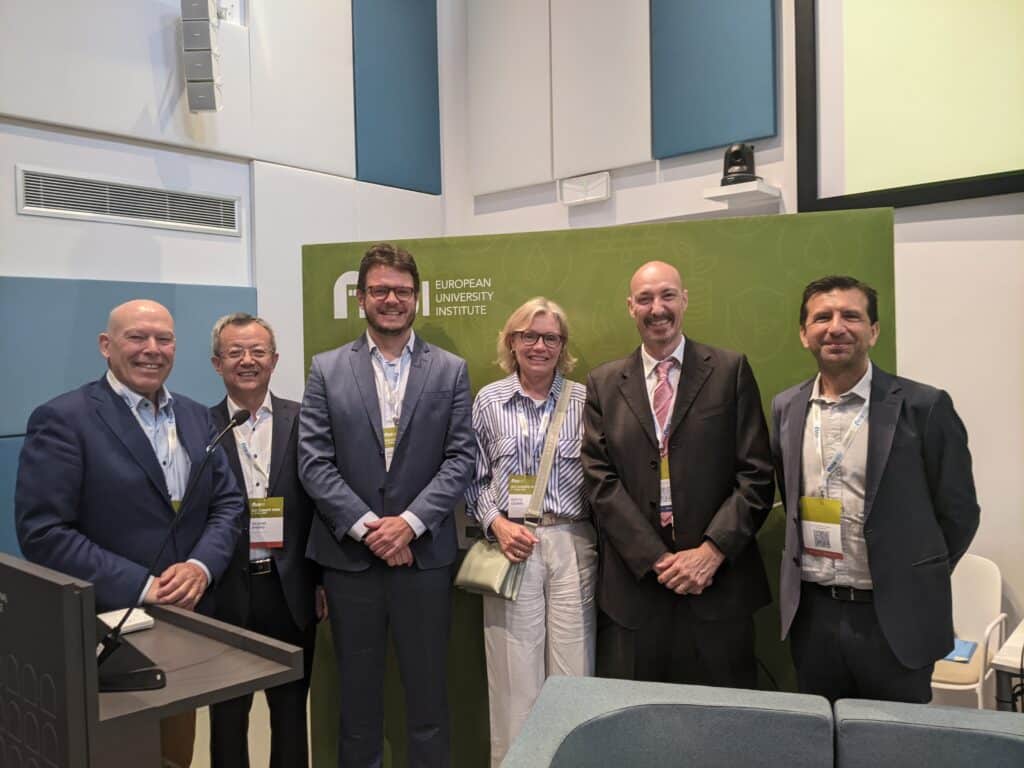Stefan Ambec
For France, 2015 will be the year of the United Nations Climate Change Conference, scheduled in December in Paris. President Hollande took advantage of this opportunity to enhance his image and international stature. His first press conference of the year, on 2 January, was devoted to this subject with Nicolas Hulot, an environmental activist and media star who was appointed “Special Envoy for Protection of the Planet”. The government has been mobilized to prepare the conference thoroughly, to ensure its success.
The beginning of this year is an opportunity to review the international commitments made with regard to reducing the greenhouse gas emissions and climate policies of the main parties concerned. The European Union got off to a good start in the 2000s with the ratification of the Kyoto protocol, the creation of a carbon market for the main industrial polluters (energy sector, cement and aluminium industries, etc.) and the go-ahead given to its Member States to generously subsidize renewable energies. Since then, recession has set in. The rates for buying back wind and solar power have been slashed, and in 2013 the price of carbon dropped to below €3 per ton, after exceeding €20 per ton in 2008. It fluctuated around €6 per ton in 2014. There too, the slump was to blame: in periods of recession the energy demand drops, which means less fossil fuel combustion and therefore fewer CO2 emissions. Europe’s carbon footprint in the past few years has been connected far more to the economic slowdown than to any political will. If commitments to reduce greenhouse gas emissions (by 30% in 2020, then 40% in 2030 from 1990 levels) are respected, it will be thanks to the recession rather than to massive investment to decarbonize the economy. This is somewhat like Russia, that in previous years exceeded its commitments made at Kyoto, due to the collapse of its industry.
When it comes to climate policy, the leadership is now in the hands of the United States and China, the other major players in the negotiations. These two countries jointly made historic commitments last November on the fringes of the Asia-Pacific summit. The US officially announced its intention to reduce its greenhouse gas emissions by 26% by 2025, from 2005 levels, and China promised to halt the growth of emissions by 2030. These undertakings may seem relatively modest, seen from Europe. However, they have the merit of finally capping the greenhouse gas emissions of the two countries with the most weight in climate negotiations, after a long period of resistance.
The United States’ commitment comes as no surprise. It echoes the Clean Power Act, a law passed by the Obama government to cut US power plant emissions by 30% by 2030, also from 2005 levels. The Act grants authority to the federal Environmental Protection Agency (EPA) to set emission standards for each State. The standards are relative (not absolute, as in Europe): they are defined in terms of CO2 equivalents per megawatt-hour of electricity produced. It is then up to every State to take adequate measures to comply[1]. The United States has already come a long way, by reducing its emissions by 11% in the period from 2005 to 2012. It still has to reach a further 15% of reductions[2].
China’s position is more surprising. The country has of course benefited significantly from climate change policies, and has been one of the beneficiaries of investments due to the Clean Development Mechanism introduced after the Kyoto Protocol, concerning energy efficiency in particular. China is moreover the main supplier of photovoltaic cells, for which the demand has been subsidized mainly by European tax-payers. What is new, though, is that it now claims to be prepared to pay the economic price of capping its own greenhouse gas emissions. This means not exploiting its carbon reserves fully, even though that would require it to put the brakes on its economic growth. What explains this turnaround? It is hardly likely that the Chinese government suddenly felt immense empathy for future generations (that are going to suffer the consequences of climate change) or for the nations exposed to rising sea-levels, such as the Maldives and the Seychelles. The explanation stems rather from the pollutants resulting from the combustion of coal, other than greenhouse gases: sulphur oxides and particulate matters. Local air pollution is a major public health problem in China, especially in the cities close to power plants. We have all seen pictures of Beijing under a cloud of pollution, to the extent that the city’s residents are forced to use air filters in their homes, schools and hospitals. Under pressure from public opinion, the Chinese authorities recently implemented policies to reduce pollution from particulates produced by coal-driven power plants and transport[3]. China’s position in the international arena stems from a need to reduce its use of coal, due to its domestic pollution.
Recent initiatives in China and the US are reasons to be optimistic about the Paris conference in 2015. The question now is how the other players in the negotiations, especially the EU Member States and India, are going to adjust to these initiatives. We can expect some strategic moves on the climate negotiation during 2015.
Stefan Ambec, Toulouse School of Economics
[1] EPA : http://blog.epa.gov/epaconnect/2014/06/understanding-state-goals-under-the-clean-power-plan/
[2] https://energyathaas.wordpress.com/2014/11/17/clinton-well-gore-went-to-kyoto-obama-went-to-beijing/
[3] https://energyathaas.wordpress.com/2014/11/17/clinton-well-gore-went-to-kyoto-obama-went-to-beijing/






